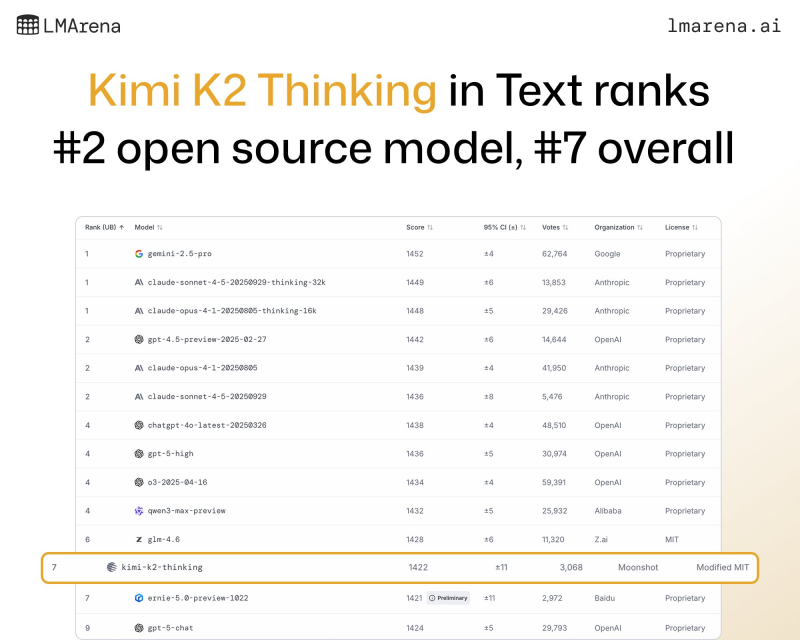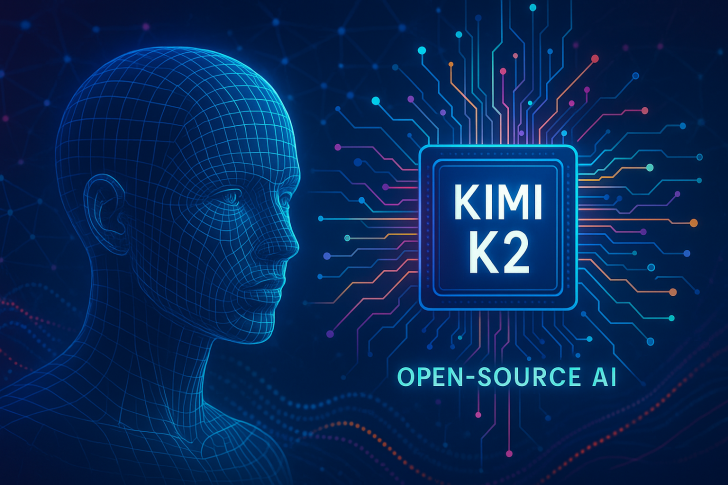⬤ Kimi K2 Thinking recently entered the global text-model leaderboard at #2 for open-source models and #7 overall. Its strong performance in reasoning, coding, and autonomous capabilities is closing the gap with proprietary systems like GPT-5 and Claude Sonnet 4.5.

⬤ The rise of high-capability open-source models has sparked debate about whether this accessibility drives innovation or creates structural risks. Some worry that rapid progress might disadvantage smaller labs, potentially leading to bankruptcies or talent drain as organizations struggle to match advanced techniques like quantization-aware training.
⬤ K2 Thinking operates as a "thinking agent" that can handle 200–300 consecutive tool calls autonomously with a 256K context window. It achieves top-tier results on key benchmarks: 44.9% on Humanity's Last Exam and 60.2% on BrowseComp, beating many larger proprietary competitors. The model excels at information gathering, multilingual coding, and verified problem-solving, with transparent reasoning steps that developers can inspect and debug.
⬤ K2 Thinking natively supports INT4 inference through quantization-aware training post-processing, making it one of the largest models with this cost-efficient setup. At $0.15 / $2.5 per million tokens, it's significantly cheaper to run than alternatives like Claude Sonnet 4.5, positioning it well in the low-cost, high-performance AI market.

⬤ K2 Thinking's launch marks a new chapter in AI competition. Currently available on kimi.com in chat mode, with full autonomous capabilities rolling out soon, it represents a serious contender in shaping the next generation of intelligent systems.
 Usman Salis
Usman Salis

 Usman Salis
Usman Salis


